If you happen to be in Portugal during the month of July, I highly recommend not to miss the beautiful city of Tomar and the Feast of the Trays celebrations.
However, there is a catch. The Feast of the Trays, or Festa dos Tabuleiros, is taking place only every four years, and the next time will be in 2019.
I was lucky to experience this beautiful festival this year and learn more about the city’s traditions.
The Tray Festival or the Divine Holy Spirit Festival is one of the most ancient cultural and religious events in Portugal. If you want, you can compare it to Thanksgiving, as both holidays’ origin is in the Harvest. It is a very colourful festival, thanks to the beautiful paper-flowers decorations in the streets of Tomar and the flowers tabuleiro (tray) the girls carry on their heads.
The citizens of Tomar are getting ready for the big celebrations a few months in advance. They spend hundreds of hours making endless number of paper flowers to decorate their streets. The residents of each street are coming up with an idea or a theme or colour, and they work together on creating the decorations for the festival. It was great watching them uniting around these decorations; from young kids to the elderly; They were all motivated to have their street the best it can be. (One of my colleagues was joking and said that this is the time there are no arguments between neighbours… )
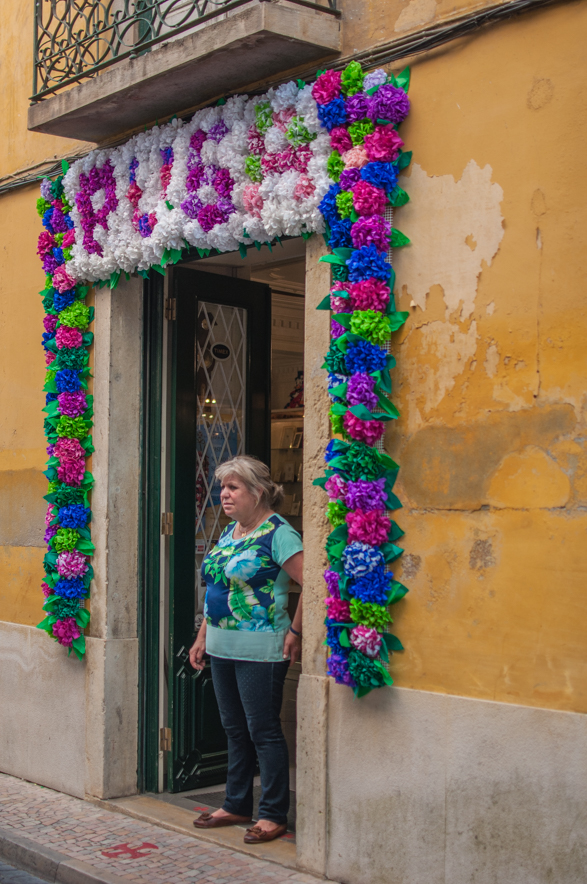
But beside the paper decorations, the citizens of Tomar are decorating their terraces with their best colourful blankets. I’ve learned it is a Portuguese tradition (not only in Tomar) to put the best blankets outside the windows, when there is a religious festival or a procession. Most of the time, these blankets are hand made and pass from one generation to another, mostly for these religious holidays.
There are several ceremonies of Festa dos Tabuleiros that are still maintained and kept in Tomar and some, that are slightly changed and adjusted to current days. For example, the Butler procession. Originally, the butler procession was a symbol of wealth and abundance, represented by bulls, or ‘The Holy Spirit Cows’. These bulls were paraded in front of the locals and afterwards were slaughtered and their meat was shared among the crowds. Whether rich or poor. This act was a symbol of brotherhood among the locals. However, since 1966 the act of slaughtering these bulls has been stopped and the meat is obtained from the owners of the Butcher shops to the families who need the most.
The parade is followed and accompanied by the local orchestra players. A great honour is given to the Butler of the parade, the City Mayor and the communities members who are dressed black and white, with a red ribbon around their neck.
The most colourful and beautiful part of the parade is the Partial Parade, followed by the Tray Parade. It is when the girls from the different chosen parishes are carrying flower baskets on their heads and march from a location outside of the city centre and pass by the Nobel Court and City hall, where the Butler of the parade, the City Mayor and the Town Council are sitting and observing the parade.
The girls are the ones who carry the heavy flower baskets, decorated not only with flowers but also with bread loaves, which are later on given to the public.
Every girl is accompanied by a guy, who is not allowed to carry the basket but only there for help and support in case the girl is losing her balance or the basket is falling.
The parade passes through Tomar old town, through the City Hall and ends at the park, where the baskets are nicely put and held before the last parade, taking place on the same evening.
If you have the chance to plan your next trip to Portugal, don’t miss Tomar with its beautiful streets and welcoming people.


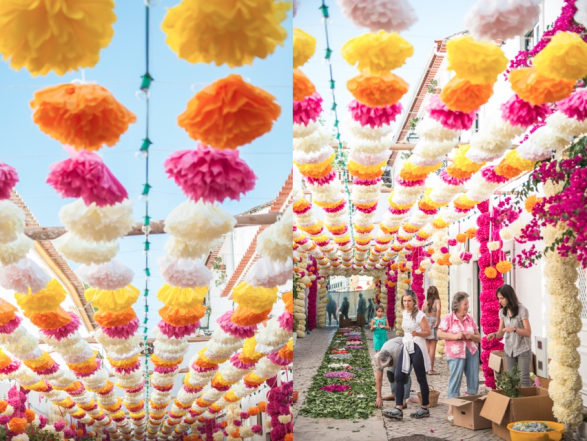
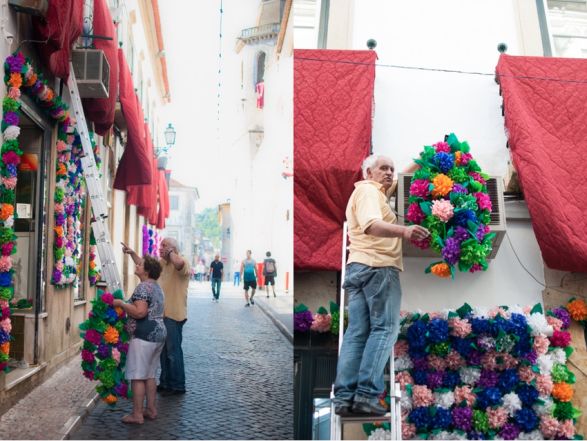
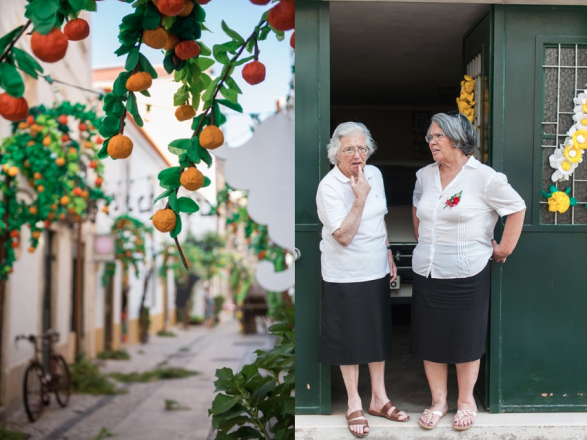
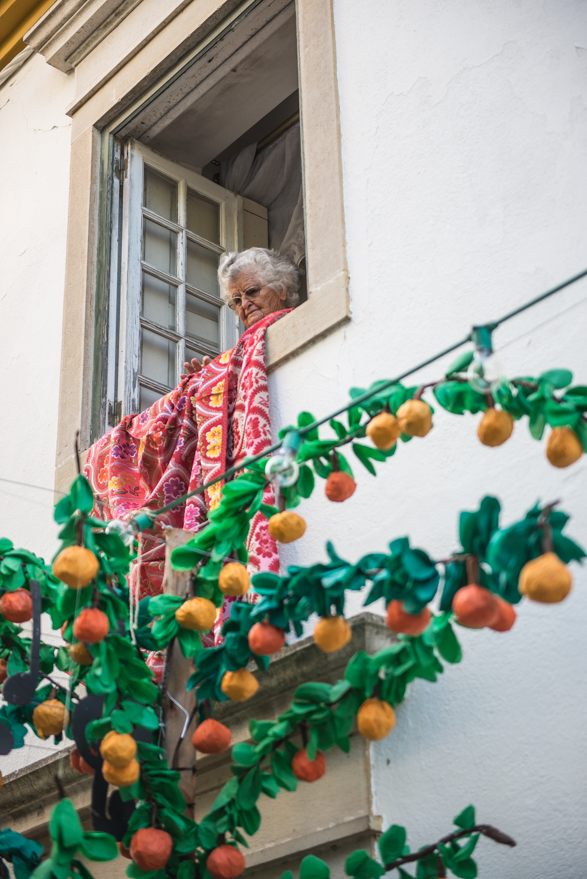
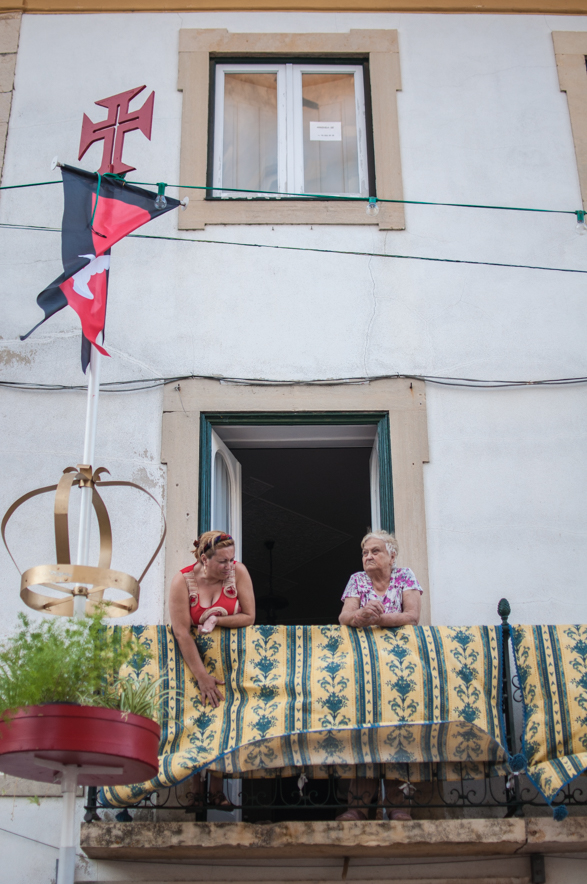
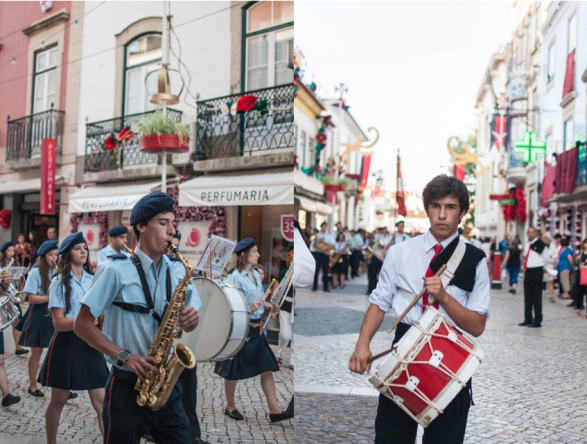
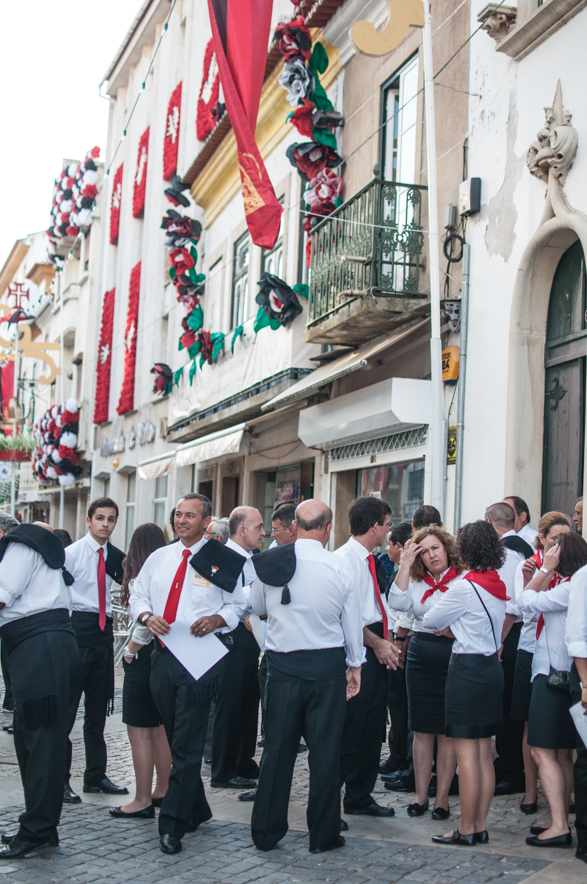
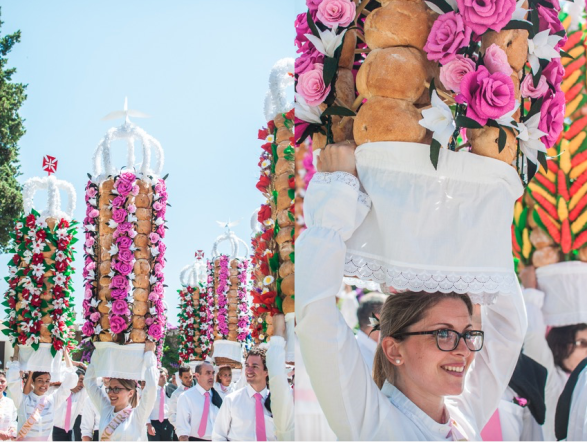
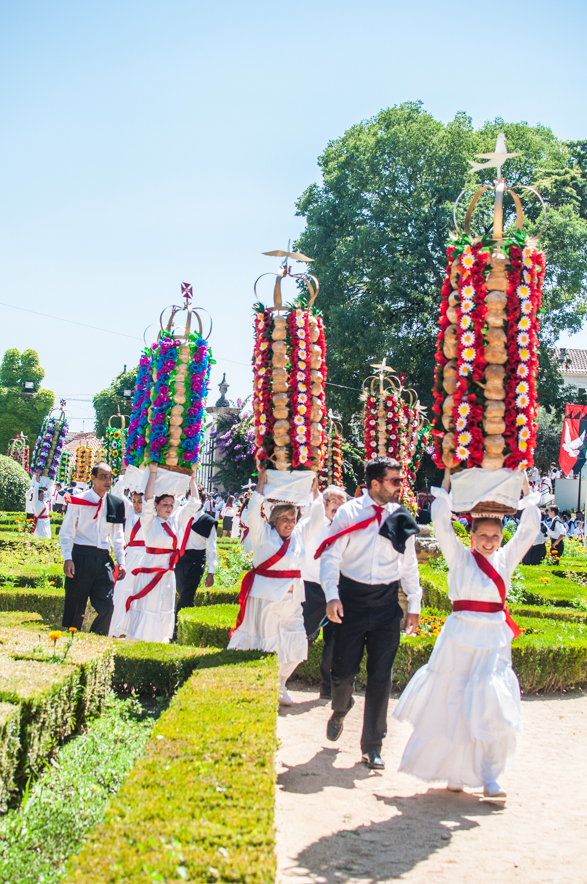
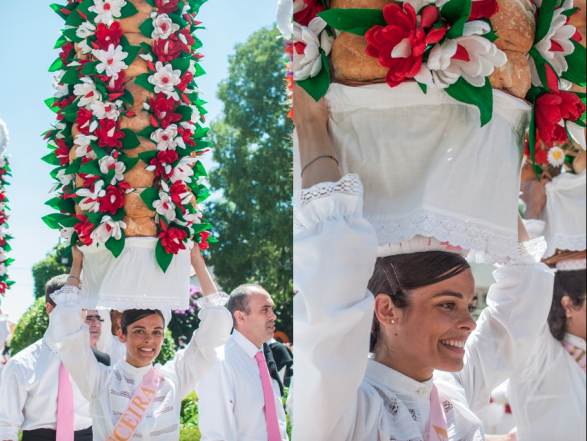
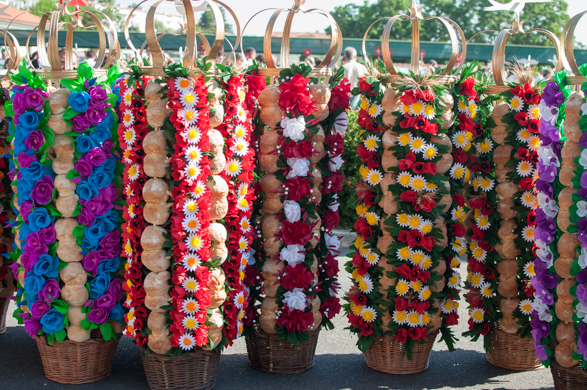
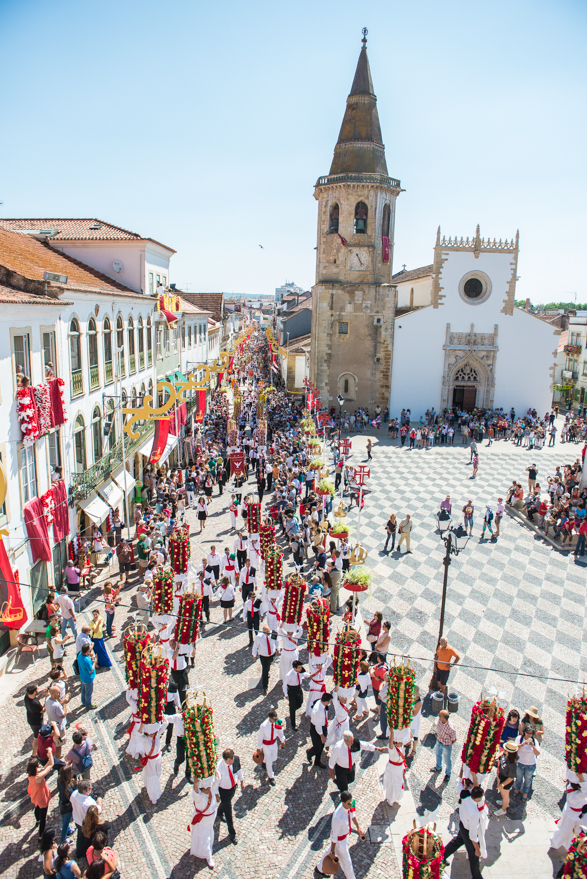
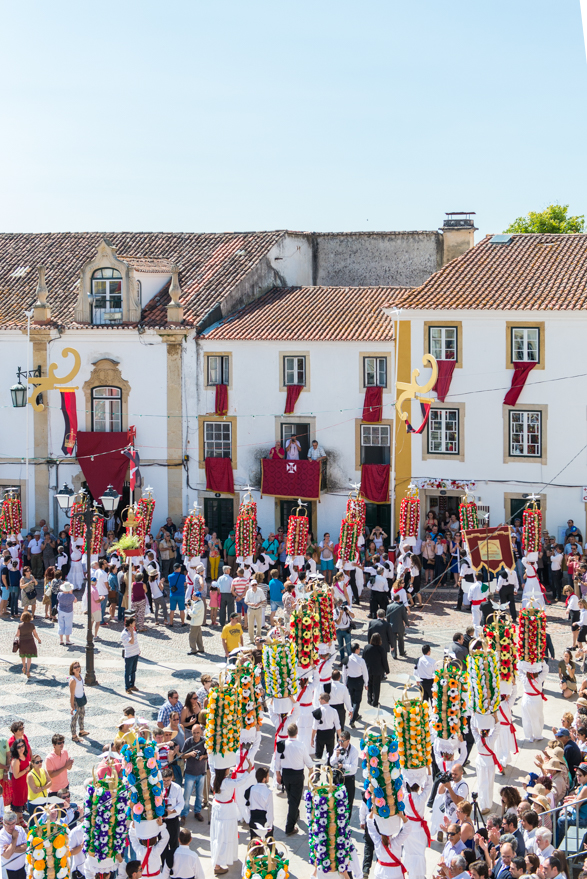
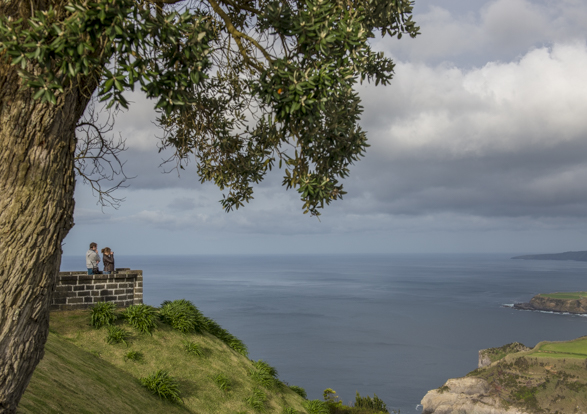
No Comments